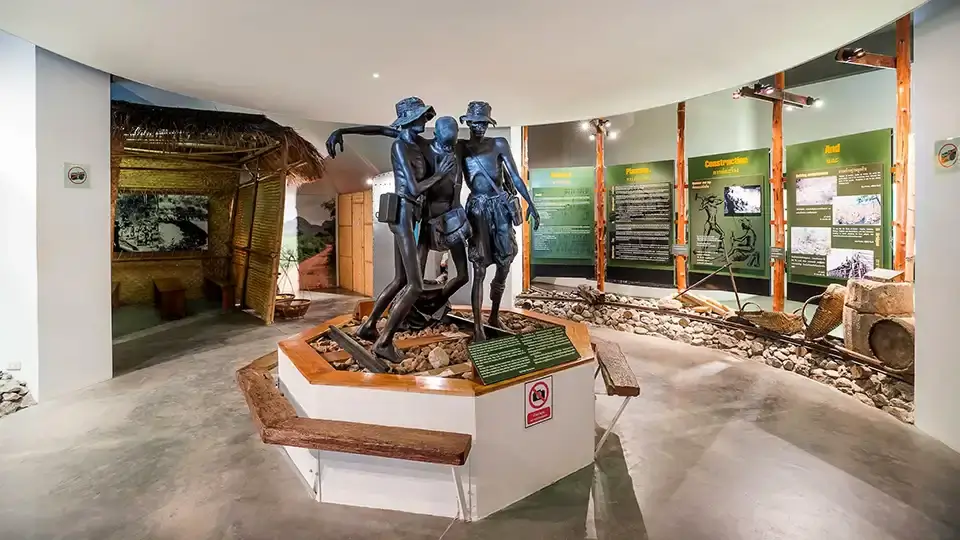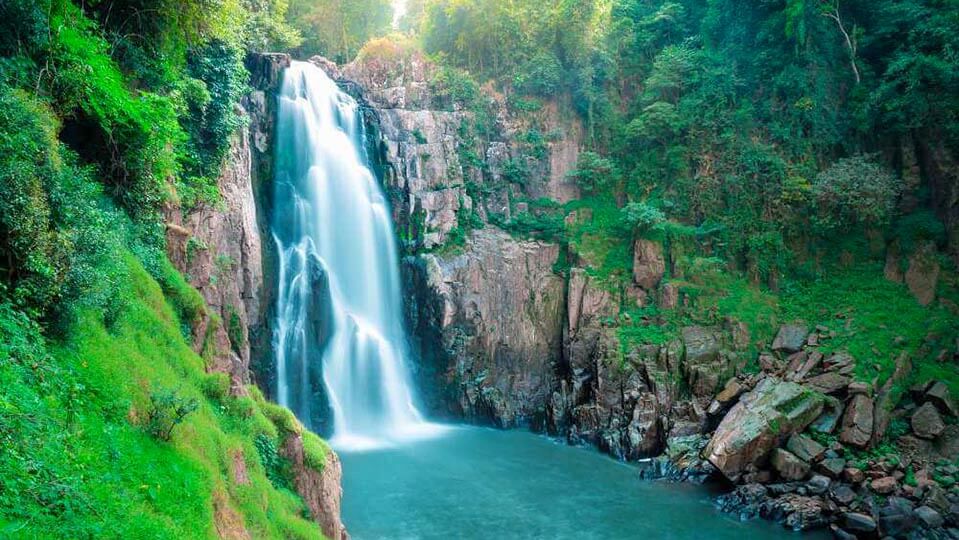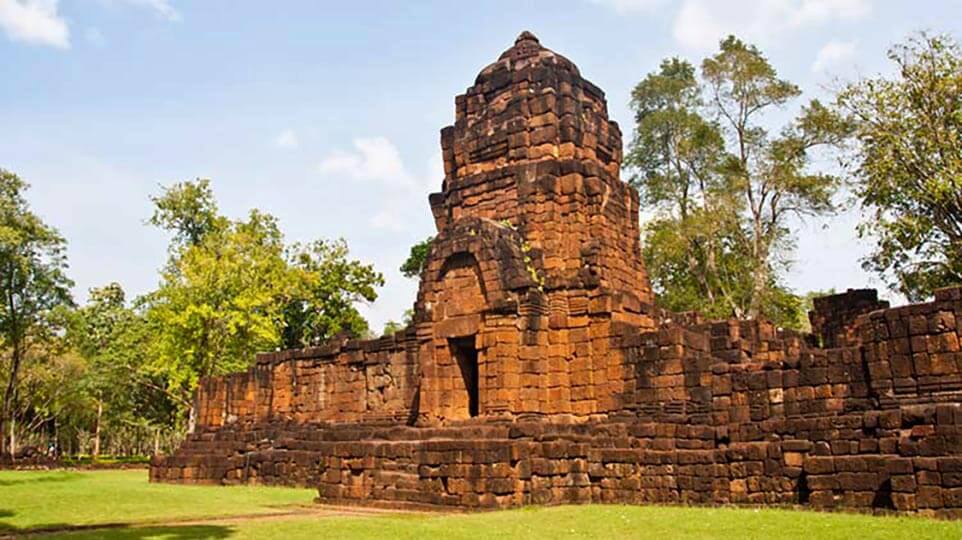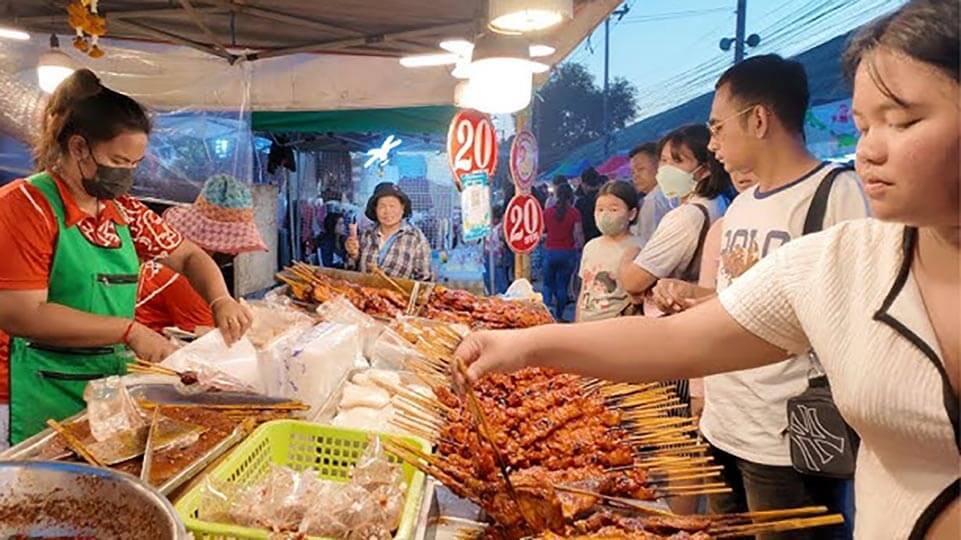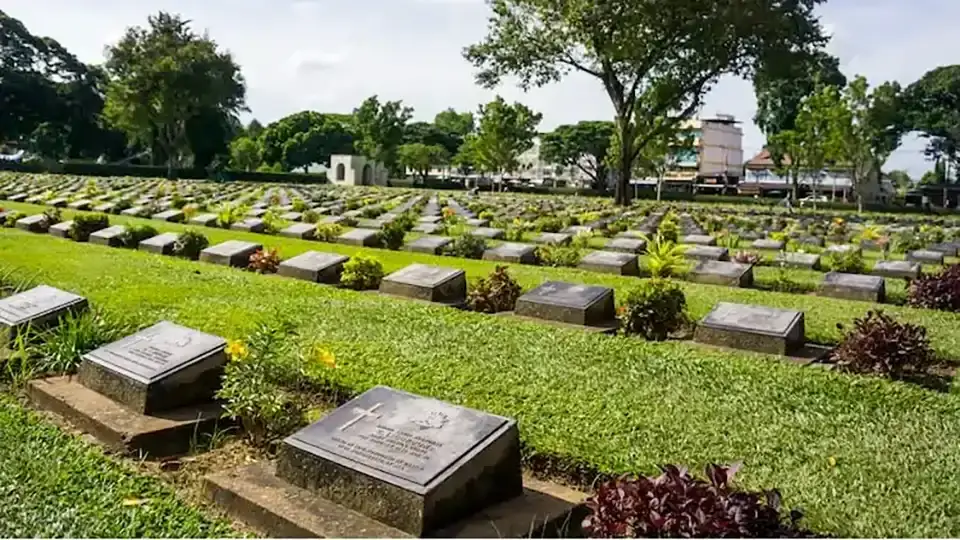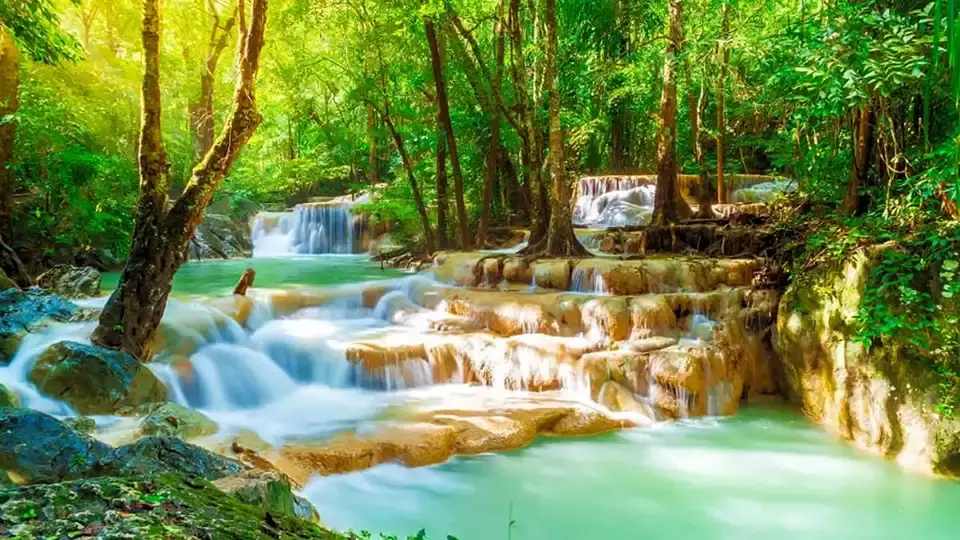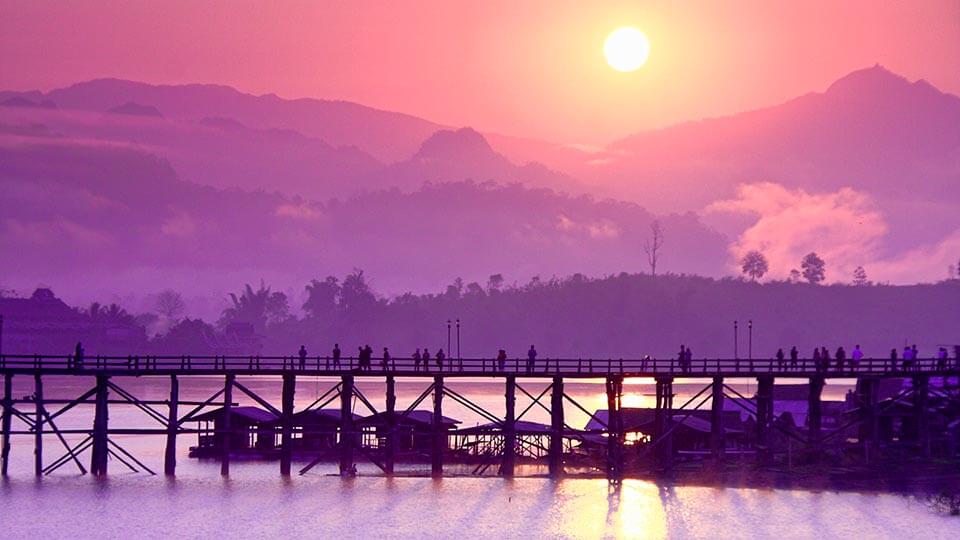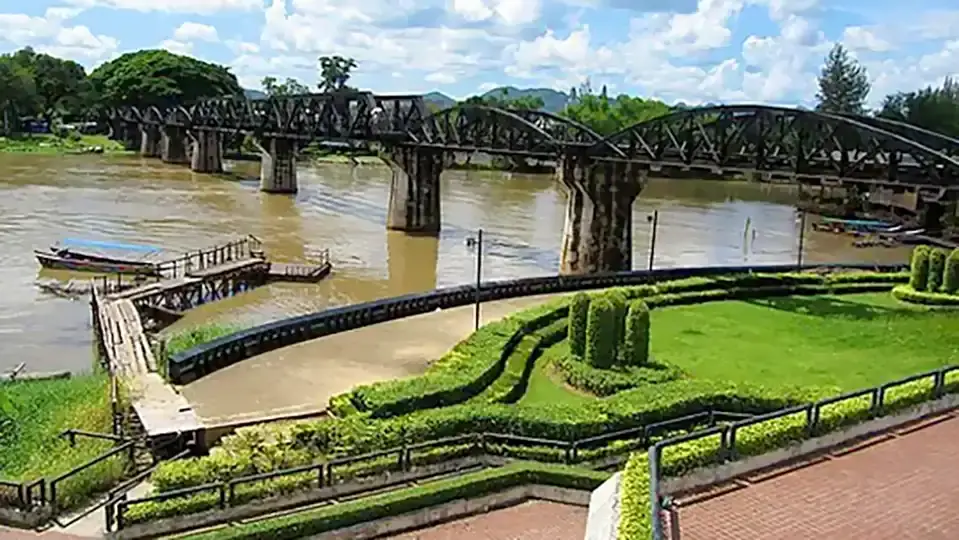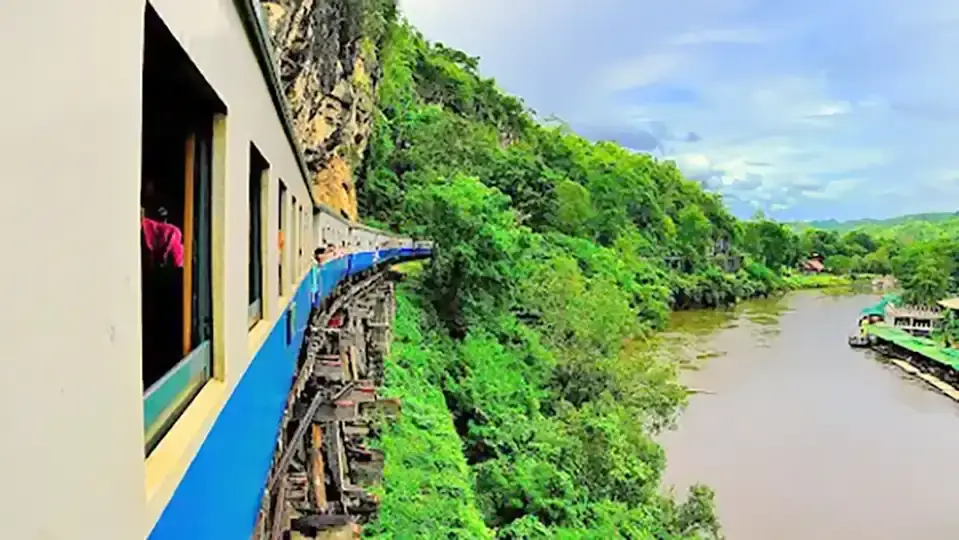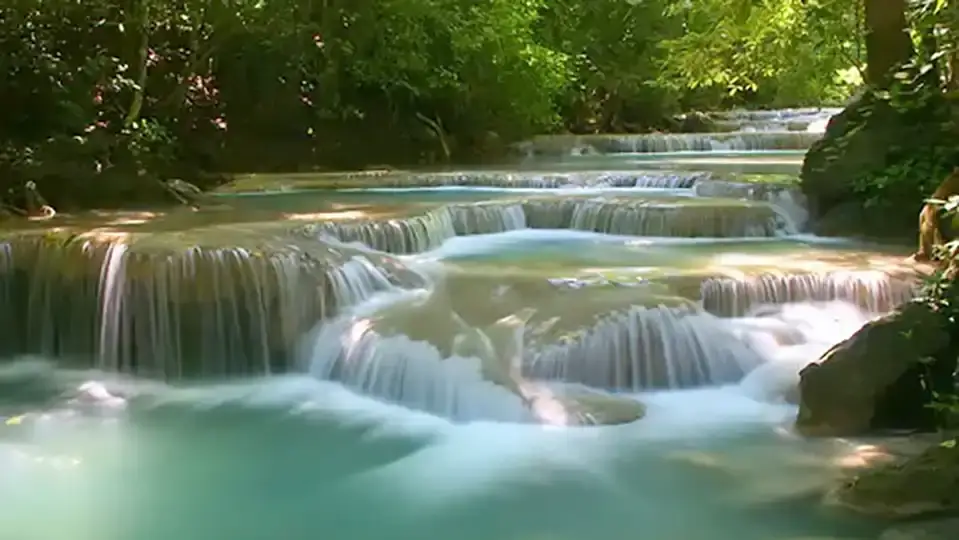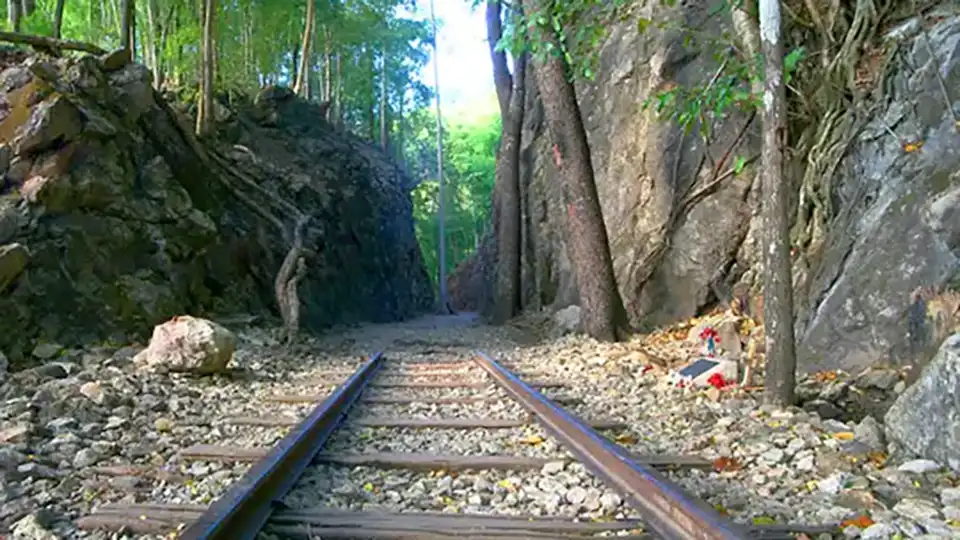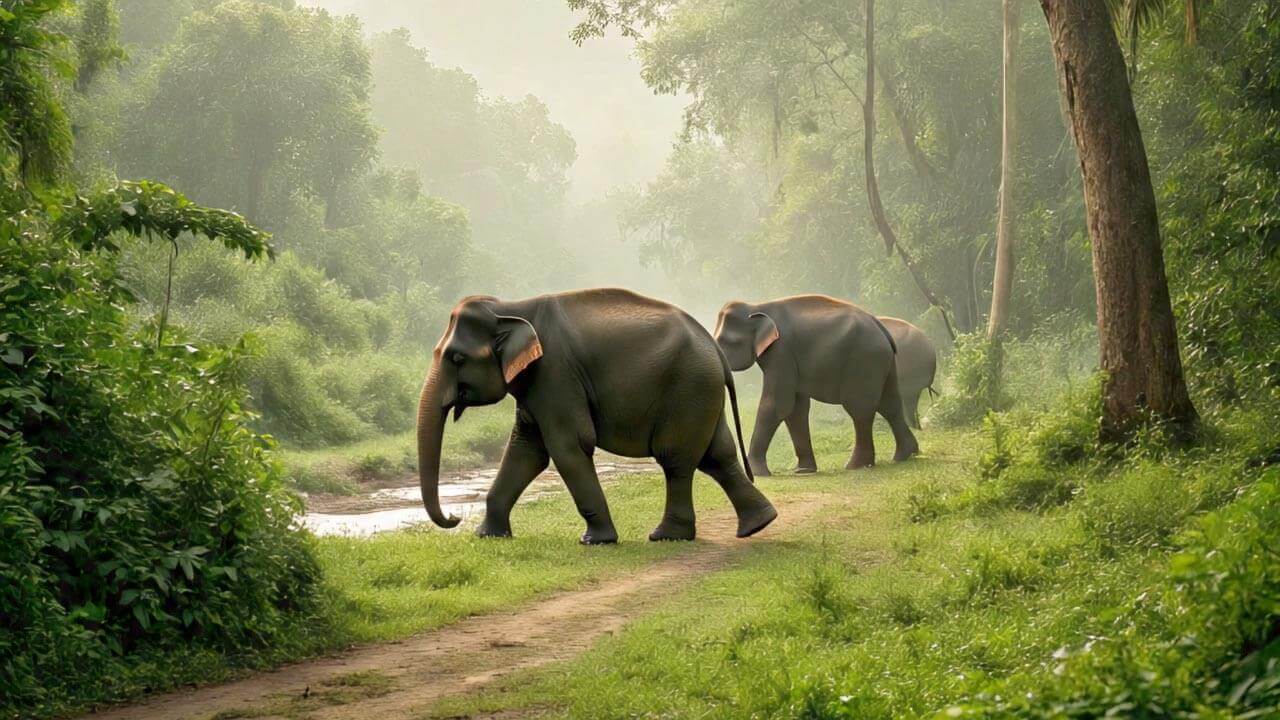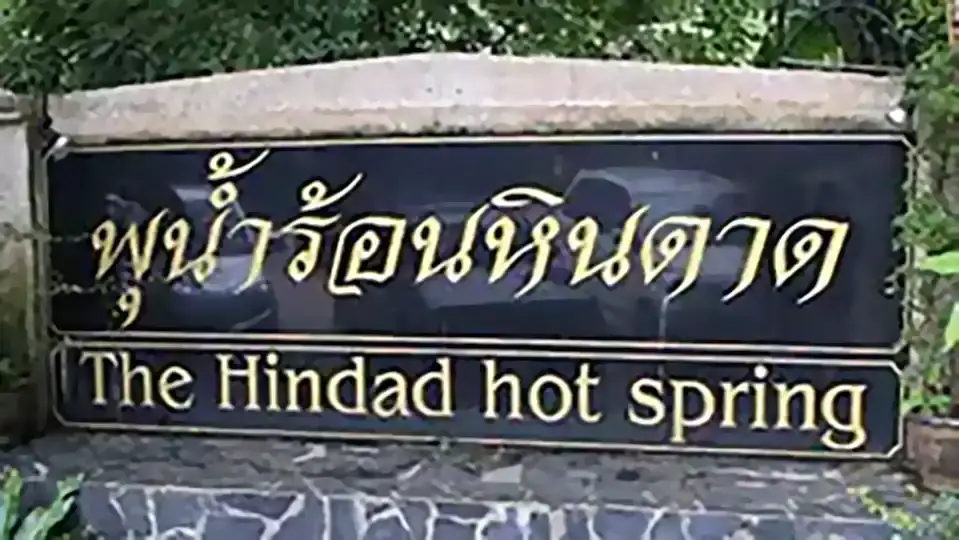Why Visit This Place? The Thailand–Burma Railway Centre is a modern, professionally curated museum dedicated to telling the complete story of the Death Railway’s construction during World War II. It […]
Read moreDiscover Historic Kanchanaburi
🌟 This is your custom private tour – you’re in complete control!
Remember, you get to choose every location on your tour. This is your day, at your pace, and to suit your interests. The sites mentioned are popular recommendations, but your private tour can include any combination of attractions, hidden gems, or special requests that capture your imagination.
Step back in time and explore the profound history of Kanchanaburi, Thailand's province of remembrance and natural beauty. Just 130km west of Bangkok, this incredible destination offers the perfect escape from the bustling city into a world of wartime history, emerald waterfalls, and stories that span from ancient Khmer ruins to World War II heroism.
🎯 You Control Everything:
- Choose which sites fascinate you most
- Spend as long as you want at each location
- Adjust your itinerary during the day
- Focus on your interests: history, nature, culture, or spiritual experiences
- No rushing, no crowds, no fixed schedules
Popular Kanchanaburi Attractions (But You're Not Limited to These!)
🚂 WWII History & Railway Heritage
Bridge over the River Kwai Marvel at the world's most famous railway bridge, immortalized in literature and film. This steel and concrete structure stands as a powerful monument to the thousands who perished during its construction, offering visitors a chance to walk across history while learning about the incredible human stories of courage and sacrifice during World War II.
Death Railway Train Ride Experience a journey through history aboard the original Death Railway line, following the route carved through impossible terrain by Allied prisoners of war and Asian laborers. This scenic train ride offers breathtaking views of the River Kwai valley while providing a moving tribute to those who built this railway under unimaginable conditions.
Thailand–Burma Railway Centre Dive deeper into the comprehensive history of the Death Railway through this world-class interpretive center. Featuring detailed exhibits, interactive displays, and personal accounts, this museum provides essential context for understanding the full scope of the railway's construction and its impact on both prisoners of war and local communities.
🏛️ War Memorials & Remembrance Sites
Kanchanaburi War Cemetery Pay respects at this beautifully maintained cemetery where 6,982 Allied prisoners of war rest in peace. The meticulously kept graves and peaceful garden setting provide a place for quiet reflection and remembrance, honoring those who made the ultimate sacrifice during the railway's construction.
JEATH War Museum Discover personal stories and artifacts that bring the human experience of the Death Railway to life. Named after the countries involved (Japan, England, Australia, Thailand, Holland), this moving museum houses authentic photographs, letters, and personal belongings that tell the individual stories behind the historical statistics.
Hellfire Pass Memorial and Death Railway Walk through the most notorious section of the Death Railway, where prisoners carved through solid rock using only hand tools. The memorial museum and walking trail provide a powerful and emotional experience, allowing visitors to understand the extreme conditions faced by those who created this passage through the mountains.
🌿 Natural Wonders & National Parks
Erawan Waterfall Discover seven tiers of emerald perfection at Thailand's most photographed waterfall. Each level offers unique swimming opportunities in crystal-clear pools surrounded by limestone formations and tropical forest. The easy hiking trail allows visitors to explore multiple tiers, with each cascade more beautiful than the last.
Erawan National Park Explore pristine wilderness surrounding the famous Erawan Falls, featuring diverse wildlife, cave systems, and forest trails. This 550-square-kilometer protected area offers excellent hiking opportunities and the chance to spot exotic birds, monkeys, and other native species in their natural habitat.
Sai Yok National Park Experience waterfalls, forest trails, and river serenity in this lesser-known gem. The park features the stunning Sai Yok Noi waterfall and offers boat trips along the River Kwai, cave exploration, and opportunities to spot the world's smallest mammal, the Kitti's hog-nosed bat.
🏺 Ancient Heritage & Cultural Treasures
Mueang Sing Historical Park Trace Khmer heritage through well-preserved 13th-century ruins that predate Angkor Wat's decline. These impressive laterite structures showcase advanced Khmer architecture and provide insight into the region's ancient history, when it served as an important outpost of the Khmer Empire.
Uttamanusorn Bridge (Mon Bridge) Cross Thailand's longest wooden bridge, stretching 850 meters across the Songaria River. Built by the Mon community using traditional techniques, this remarkable structure connects two sides of the river while offering spectacular views and insight into Mon cultural traditions that continue today.
🌊 Relaxation & Unique Experiences
Hindad Hot Spring Rejuvenate in natural mineral-rich waters surrounded by forest scenery. These therapeutic hot springs offer the perfect way to relax after a day of exploration, with temperatures reaching 40°C and believed to have healing properties for various ailments.
Kanchanaburi River Kwai Nightlife District Experience riverside dining and entertainment along the famous river. This area offers floating restaurants, live music venues, and the chance to dine while watching the River Kwai flow by, creating magical evening experiences with traditional Thai hospitality.
Discovering Ethical Elephant Sanctuaries Connect with rescued elephants in ethical sanctuaries that prioritize animal welfare. These centers offer educational experiences about elephant conservation while allowing visitors to observe these magnificent creatures in natural, retirement-like settings without exploitation or riding.
🎨 Remember: This is YOUR Custom Private Tour!
The attractions above are popular requests, but we are absolutely NOT limited to this list. Your private tour can include:
- Off-the-beaten-path war sites your guide knows but tourists rarely visit
- Local markets and authentic dining experiences
- River boat trips and bamboo rafting adventures
- Photography workshops at the most meaningful historical spots
- Spiritual experiences at local temples and meditation centers
- Traditional Mon and Karen village visits
- Any special interests you have - just tell your guide!
Why Your Thai Guide Makes the Difference
✅ Complete Flexibility - Change your mind? Want to spend longer somewhere? No problem!
✅ Local Expertise - Your guide brings Kanchanaburi's history to life with stories you won't find in guidebooks
✅ Comfortable Travel - Private air-conditioned transportation between all sites
✅ Photography Support - Your guide knows the best angles, lighting, and secret viewpoints
✅ Cultural Insights - Learn about Thai wartime history, local traditions, and natural conservation
✅ Authentic Experiences - Discover hidden corners and local perspectives that group tours miss
Your Perfect Day Awaits
Whether you're a history enthusiast wanting to explore every wartime memorial, a nature lover chasing the perfect waterfall shot, a spiritual seeker drawn to places of remembrance, or a family looking for engaging educational experiences, your private Kanchanaburi tour will be crafted specifically for you.
Duration: Flexible (typically 8-10 hours, but adjustable to your preferences)
Group Size: Your private group only (no strangers!)
Pace: Entirely up to you - from leisurely exploration to comprehensive discovery
 Ready to Design Your Perfect Kanchanaburi Adventure?
Ready to Design Your Perfect Kanchanaburi Adventure?
Your custom private tour of Thailand's historic province awaits. From iconic WWII memorials to emerald waterfalls, from ancient Khmer ruins to railway journeys, from elephant sanctuaries to hot springs - this is your day to discover Kanchanaburi exactly as you want to experience it.
Contact us today to start planning your personalized journey through Thailand's most moving and beautiful destination. Your private guide and comfortable transportation are ready to make your Kanchanaburi dreams come true!
Licensed with the Tourism Authority of Thailand - Your safety, comfort, and satisfaction guaranteed.
- Thailand–Burma Railway Centre: In-Depth History of the Death Railway
- Sai Yok National Park: Waterfalls, Forest Trails, and River Serenity
- Mueang Sing Historical Park: Tracing Khmer Heritage in Kanchanaburi
- Kanchanaburi River Kwai Nightlife District: Riverside Dining and Entertainment
- Kanchanaburi War Cemetery: A Place of Reflection and Remembrance
- JEATH War Museum: Personal Stories from the Death Railway
- Erawan Waterfall: Seven Tiers of Emerald Perfection
- Uttamanusorn Bridge (Mon Bridge): Thailand’s Longest Wooden Bridge
- Bridge over the River Kwai
- Death Railway train ride in Kanchanburi
- Erawan National Park, Kanchanaburi
- Hellfire Pass Memorial and Death Railway
- Discovering Ethical Elephant Sanctuaries in Kanchanaburi
- Hindad Hot Spring in Kanchanaburi Province
- (CLOSED) Kanchanaburi Tiger Temple closed in 2016
Sai Yok National Park: Waterfalls, Forest Trails, and River Serenity
Why Visit This Place? Sai Yok National Park is a natural escape famous for its scenic waterfalls, limestone cliffs, and dense jungle along the Kwae Noi River. Known for the […]
Read moreMueang Sing Historical Park: Tracing Khmer Heritage in Kanchanaburi
Why Visit This Place? Mueang Sing Historical Park offers a rare glimpse into Thailand’s Khmer past. Dating back to the 13th and 14th centuries, this archaeological site contains well preserved […]
Read moreKanchanaburi River Kwai Nightlife District: Riverside Dining and Entertainment
Why Visit This Place? The River Kwai nightlife district offers a lively mix of riverside restaurants, bars, and music venues with views of the iconic bridge and the river itself. […]
Read moreKanchanaburi War Cemetery: A Place of Reflection and Remembrance
Why Visit This Place? Kanchanaburi War Cemetery, also known as Don Rak Cemetery, is the main burial site for Allied prisoners of war who died during the construction of the […]
Read moreJEATH War Museum: Personal Stories from the Death Railway
Why Visit This Place? The JEATH War Museum offers a raw and intimate look at the lives of prisoners of war (POWs) and Asian labourers forced to work on the […]
Read moreErawan Waterfall: Seven Tiers of Emerald Perfection
Why Visit This Place? Erawan Waterfall, located in Erawan National Park, is one of Thailand’s most famous natural attractions. Its seven cascading tiers, each with emerald-green pools, are surrounded by […]
Read moreUttamanusorn Bridge (Mon Bridge): Thailand’s Longest Wooden Bridge
Why Visit This Place? Uttamanusorn Bridge, more commonly known as the Mon Bridge, is the longest wooden bridge in Thailand and the second-longest in the world. Stretching over 400 metres […]
Read moreBridge over the River Kwai
Travellers recognise the Bridge over the River Kwai from the Oscar‑winning film, but the true story is even more compelling. The bridge stands just outside Kanchanaburi, roughly 130 km west […]
Read moreDeath Railway train ride in Kanchanburi
One would think that an attraction called the Death Railway Train Ride will turn off a lot of people. However, this is not the case. After all, the train ride […]
Read moreErawan National Park, Kanchanaburi
The Erawan National Park is one of the many wonderful national parks in Thailand. This park, in particular, encompasses almost 550 sq km of great mountain tops and valleys. The […]
Read moreHellfire Pass Memorial and Death Railway
The Death Railway: A Dark Chapter in WWII History During World War II, Japanese forces planned to build a railway connecting their conquered territories. This ambitious project would link Singapore […]
Read moreDiscovering Ethical Elephant Sanctuaries in Kanchanaburi
Thailand’s majestic elephants have long captivated international visitors, drawing travelers from around the world seeking meaningful encounters with these gentle giants. However, the landscape of elephant tourism has dramatically evolved, […]
Read moreHindad Hot Spring in Kanchanaburi Province
Hindad Hot Spring: Thailand’s Historic Thermal Retreat Hindad Hot Spring remains Thailand’s most historically significant thermal destination in 2026, uniquely combining WWII heritage with natural wellness tourism approximately 120-130 kilometers […]
Read more(CLOSED) Kanchanaburi Tiger Temple closed in 2016
Permanently Closed, left for reference! Thailand’s Tiger Temple: From Tourist Haven to Wildlife Crime Scene For over ten years, Thailand’s Tiger Temple drew millions of visitors to Kanchanaburi province. Tourists […]
Read more
 Ready to Design Your Perfect Kanchanaburi Adventure?
Ready to Design Your Perfect Kanchanaburi Adventure?